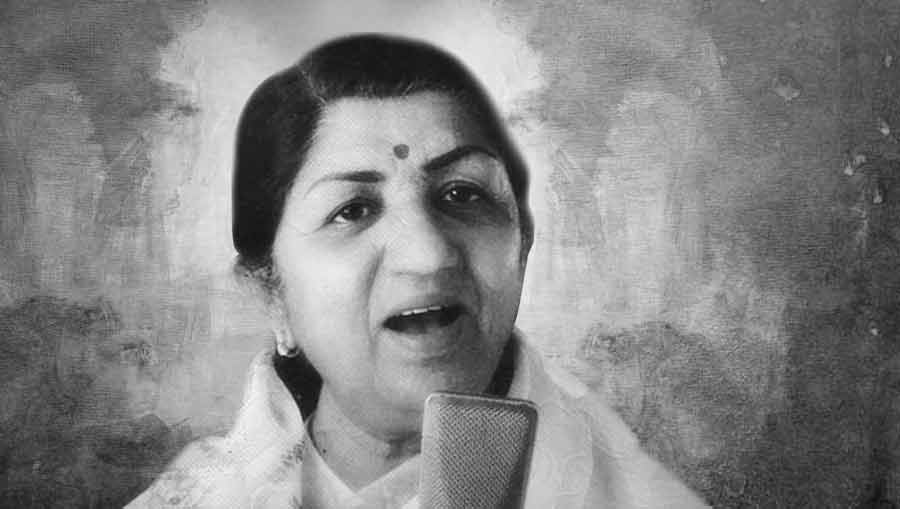What did Lata do for India?
The answer to this question led me to Zia-ul-Haq’s Pakistan. In one of the country’s jails sat Habib Jalib, a revolutionary poet and Left-wing activist, who hurled many a kalaam against sadar-e-mulk. In his later years, someone asked him how he survived the sequence of his incarcerations. He replied: ‘Qafas mein to hum mar chaley thhe ‘Jalib’, Bachaaya humko aawaaz-e-Lata ne.’
Most people who focus on India’s military strength – bombs, soldiers, missiles and aircraft – miss the country’s most potent weapons. The military investments could reach finite places; her cultural weapons could reach deep inside enemy territories.
At the top of India’s cultural weapons was Lata Mangeshkar. The Chinese probably never reached for a radio to hear her sing, but the Pakistanis did and I can imagine a soldier, crouched along the border in Uri and given an order to fire every two hours on an Indian outpost, probably firing away during the day and getting back to a lonely bunk bed in the barracks listening to ‘Lag ja gale’ in the evening and questioning the futility. Or the top brass in Pakistan’s army issuing anti-India statements by day but seeking their evening refuge in ‘Hum hain mataa-e-koocha’.
Perhaps no Indian has done as much to confuse Pakistanis: were Indians as bad as they had been indoctrinated in their political rallies? Sachin Tendulkar was respected but he was still an adversary who needed to be dismissed under 10 during a needle match; Dilip Kumar was one of them and one of us but you couldn’t watch him each evening. Lata was different; she didn’t need to be seen; she could be heard across the hours; she had seeped into Pakistani consciousness to the point that someone from that side once said half-laughingly: ‘Take Kashmir baba, but give us Lata.’ If Lata were a non-fungible token (NFT as they call it), she would have been listed, traded and invested in by 23 percent of the population residing in the subcontinent – nearly one of four people walking the earth.
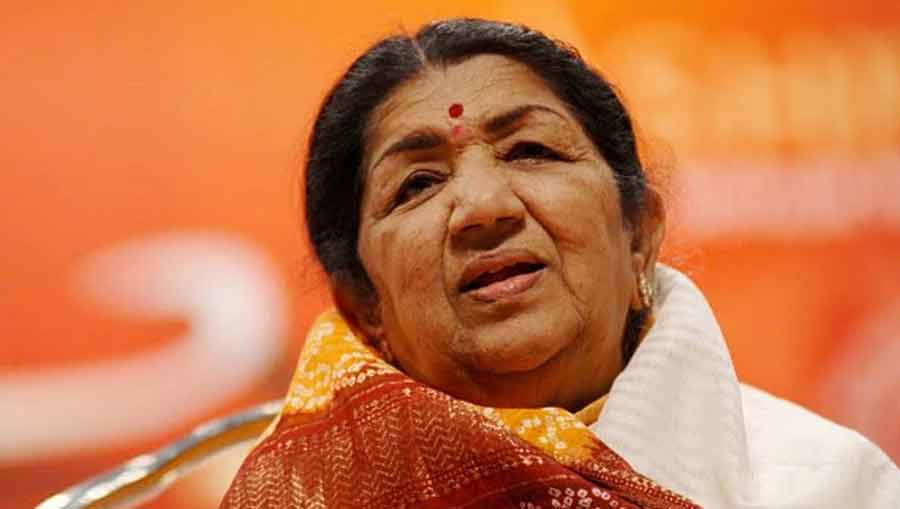
No Indian has done as much to confuse Pakistanis. Tendulkar was respected but he was still an adversary; Dilip Kumar was one of them and one of us; but Lata was different; she had seeped into Pakistani consciousness TT archives
What does that make Lata? Possibly the only Indian to enjoy unrestricted acceptance in a troubled subcontinent. I have chosen my words carefully: Tagore enjoys extensive currency but only in two countries (or more specifically, one Indian state and one country); Gandhi in one country; Tendulkar in one country and part-acceptance in three; Lata in all five (counting Sri Lanka but leaving Afghanistan out). She was (and is) India’s biggest export and if you are received with a smile or given a discount in countries like Turkey, Iran, Emirates and Egypt, it is possibly because someone there picked up strains of ‘Chalo dildaar chalo’ or ‘Aayega aanewala’ at some point in their lives.
I have a complaint: what Lata has contributed to India has remained relatively under-researched. Most Indians have turned to Lata as someone turns to a therapist: to soothe, assure and calm. It is only at that level that Lata has been appraised – as someone to saccharine our leisure hours. Curiously, the macro impact of this sweetener has been overlooked.
With ‘Barsaat’, she became the embodiment of a young nation’s spirit
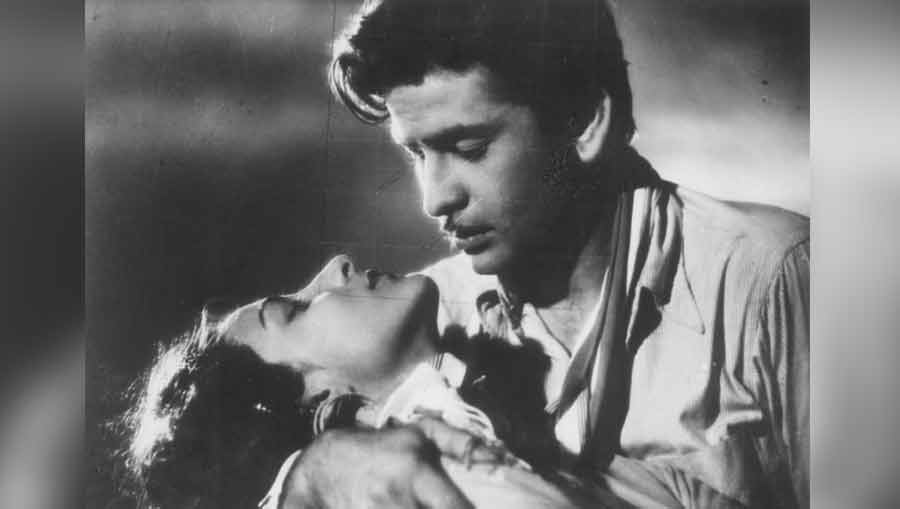
Raj Kapoor’s ‘Barsaat’ wasn’t just a film; it was a metaphor for a new nation – the shedding of a skin
This then is my case for Lata’s national contribution: she began singing in films the year the Quit India Movement was launched; she began singing in Hindi cinema the month India became independent; she passed away in the 75th year of the nation’s existence; she was witness to 15 Prime Ministers, three Viceroys and one Governor General. A towering Patel may have brought the states together; a diminutive Indian helped keep it that way.
At no moment in the existence of this nation did Lata play a more decisive (but under-acknowledged) role than in the first year of the Indian nation. The years 1947-48 were perhaps the most naazuk; the horrors of Partition had scarred public psyche; the displaced were only beginning to settle; the father of the nation had been shot; communal violence hung in the oxygen; a slice of Kashmir had been carved away; the Indian army was called to ‘invade’ some states dithering to join.
At that moment, something curious had begun to transpire in a Bombay suburb. The 24-year-old son of a theatre personality was embarking on his second film; a BEST bus conductor was being offered an assignment to write song lyrics; an untested independent partnership between an Andhraite and a Gujarati was being selected to score music; a slipperless 19-year-old was being shortlisted to sing.
That ferment between debutants and fledglings combined to do something more than fill seats in cinema halls. Raj Kapoor’s Barsaat provided an anguished nation a sense of hope; Shailendra and Hasrat (remember the bus conductor?) wrote simple lyrics that extended beyond the Urdu gravitas; Shankar-Jaikishan provided a new musical direction to an infant nation with a lighter Bhairavi; Lata liberated India from a nasal obsession.
Barsaat wasn’t just then a film; it was a metaphor for a new nation – the shedding of a skin.

Raj Kapoor, Nargis and Lata on the sets of ‘Barsaat’ raj-aur-nargis/Tumblr
What shook India was not just the difference but the magnitude. It wasn’t just a song here or there that caught public fancy. It was a complement of nine songs; nine songs that worked like a mood tsunami on a nation needing a mood-lifter. The songs comprised Jiya beqaraar hai, Hawa mein udta jaaye, Meri aankhon mein bas gaya koyi re, Bichchde hue pardesi, Patli kamar hai, Barsaat mein hum se mile tum sajan, Mujhe kisi se pyaar ho gaya, Ab mera kaun sahaara and Chhor gaye baalam. From 54 for four, Lata and her team had drawn India to a respectable 385 for five, if a cricketing analogy can be applied.
Barsaat’s were not just successful ditties; they introduced to a young nation a new sound. These songs had not just entranced a nation; they had given it a new direction. This had not just been another successful film; this was our Beatles moment (when they appeared on the Ed Sullivan Show on their first US tour).
The one female voice that sang all Barsaat’s songs was of Lata Mangeshkar (for Nargis, Nimmi and Bimla Kumari). Fresh voice. Nineteen-year-old voice. Voice without the Shamshad or Noorjehan baggage. You could argue that Barsaat was a metaphor for the country; the voice of this young woman the embodiment of a young nation’s spirit.
India would never be the same again.
With ‘Ae mere watan ke logon’, she transformed the mood of a nation
A decade-and-a-half later, Lata was to make her second decisive contribution to the country’s musical memory. India had just lost the war with China.
For the 1963 Republic Day, there was an invitation to publicly sing a patriotic song in the audience of the Prime Minister. Pradeep wrote the words; C. Ramchandra set the score; a duet was created. Asha Bhonsle would start the song with ‘Ae mere watan ke logon’; Lata would follow with ‘Zaraa aankh mein bhar lo paani’.

In 1963 as in 1948, with ‘Ae mere watan ke logon’, Lata Mangeshkar transformed the mood of a nation again; she embodied the voice of a country speaking to itself Tweeted by @Prashant4INC/Twitter
The scores and lines were handed out to the singers on January 25. What transpired in the Mangeshkar household that evening is not public but the following morning there was only one singer who stepped forward to do the honours. Asha’s air ticket to Delhi was cancelled, Lata memorised the lines on the flight and went ahead to sing what has since emerged as India’s most turned-to non-film song, usually the first to echo across the backstreets on August 15 and January 26, irrespective of where one lives.
It is not a happy song; it does not possess the muscular pep of ‘Himmat watan ki hum se hai’ or ‘Hindustan ki kasam’; it puts our collective failure (‘Jab ghaayal hua Himaalay’) in the open and yet so subtly the needle in Lata’s voice transforms the sorrow of loss into an expression of national respect. Would any other voice have achieved this turnaround? Speculative question but my default answer is ‘Possibly not’.
Nehru wept while Lata sang; he invited her home where two grandsons (Sanjay and Rajiv) were presented to her; she was asked to repeat the ‘Watan’ song but she demurely declined. A year later, Nehru attended a charity show at Brabourne Stadium in Bombay where Lata sang the more chronologically relevant 'Aji rooth kar ab kahan jaiyyega'. While on stage, she received a Nehru message to sing his favourite; when he was leaving, he called for her, rolled down the car window, held her hand and said: “I came to hear you sing ‘Ae mere watan ke logon’.’’
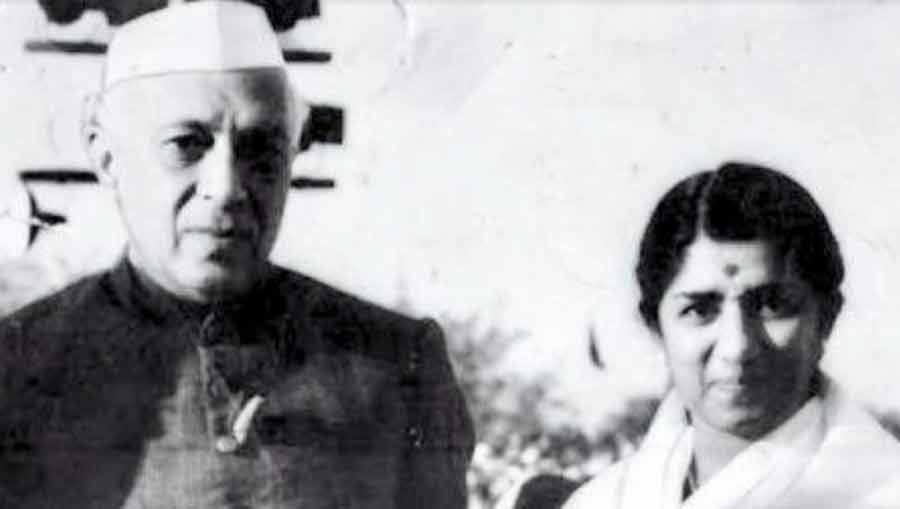
Lata with Nehru Tweeted by @mangeshkarlata/Twitter
The circumstance, the voice, the emotion and the back stories have over the decades fused to make this an ‘anthem’ after our anthem. At any occasion of official importance, Jana Gana Mana comes first, Vande Mataram and Saare jahaan se achha thereafter but after these necessary observances have been respected, the first of the rest has to inevitably be AMWKL.
So what did Lata achieve? The same thing in 1963 as in 1948: she transformed the mood of a nation; she embodied the voice of a country speaking to itself (the opening stanza is more an address than a song). One day, the army could well acknowledge her service by creating a Lata Regiment in her honour. Just maybe.
What made this singular voice a source of collective consciousness
The third aspect of Lata’s career is her influence. After Noor Jehan migrated to Pakistan, she turned from national to provincial (how many songs of a post-1940s Noor Jehan can you remember?). Lata, on the other hand, graduated to become the cosmopolitan voice of the subcontinent.
She sang for Anil Biswas and Sachin Dev Burman from East Bengal; she sang for Vasant Desai who came from a pocket of Maharashtra; she sang for Kalyanji-Anandji from Kutch; she sang for Jaikishan from Valsad; she sang for Shankar from Andhra Pradesh; she sang for Ghulam Mohammed from Bikaner; she sang for Roshan, Madan Mohan and Jaidev from Punjab; she sang for Hemant Kumar and Salil Chowdhury from West Bengal; she sang for Khemchand Prakash and Jamal Sen from Rajasthan; she sang for tunes composed by Naushad and SN Tripathi who came from Uttar Pradesh; she sang for Chitragupt from Bihar; she sang for AR Rahman from Tamil Nadu; she sang for C. Ramchandra from Aurangabad. These music directors brought their distinctively regional influences to Lata’s funnel. Her voice – needle, pronunciation and emotion – made their tunes national currency. The folk songs of East Bengal and other regions had existed for centuries; Lata’s voice was the last critical mile in transforming them from regional treasures into national assets sung by millions.
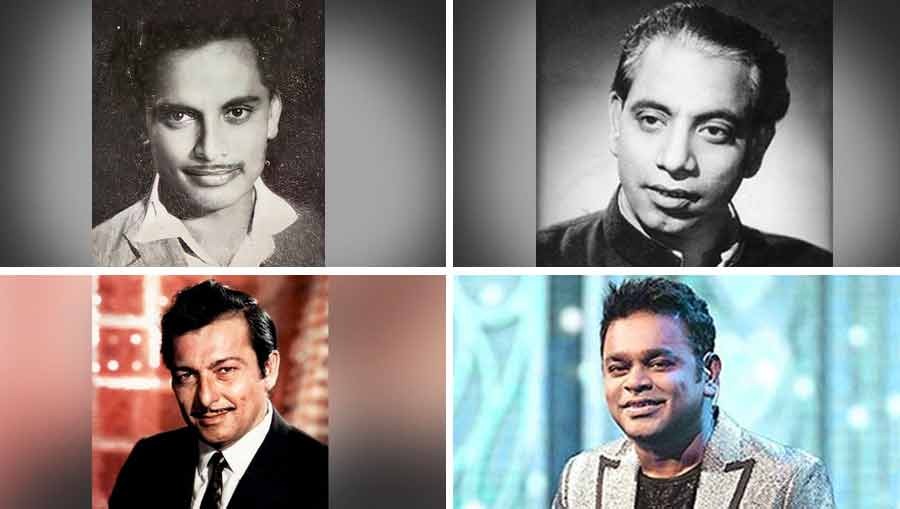
Lata Mangeshkar’s voice – needle, pronunciation and emotion – made tunes by composers like (clockwise from top left) Anil Biswas, Ghulam Mohammed, AR Rahman and Madan Mohan, among many others, national currency Wikimedia; Wikimedia; www.madanmohan.in; TT archives
Some day when they reappraise Lata Mangeshkar, they will cease referring to her as a nightingale. They will stop seeking metaphors related to throat and throw. They will, instead, extend from the ‘what’ to the ‘how’; maybe only then will we begin to understand what made this singular voice a source of collective consciousness.
There were two Latas; the symbol and the person
The last dimension of Lata’s career is perhaps as interesting as it is relevant.
She was an admirer of Veer Savarkar, was right wing in her stance and tied rakhi around the wrist of the man who now runs the country. I struggled with this side of her. How could she, I asked. Especially when the man who took her as his disciple and taught her the first raag (Hamsadhwani, her favourite) was Ustaad Aman Ali Khan Bhendibazaarwale. The maulana who taught her Urdu talaffuz (pronunciation) was someone called Mehboob. The music director who backed her against popular judgement was Ghulam Haider. The film producers who gave her the first two Hindi film breaks were Mehboob Khan and Kamal Amrohi. The person she regretted never singing for was Yusuf Khan. The person who visited her every single evening for three months when she had lost her voice following suspected poisoning was Majrooh Sultanpuri. The person who considered her to be a younger sister was Naushad Ali.
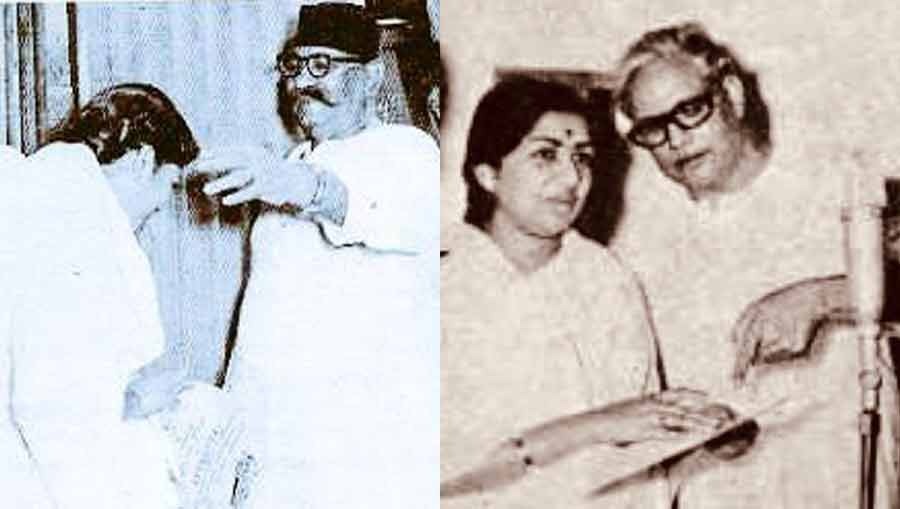
Lata Mangeshkar with (left) Bade Ghulam Ali Khan, and with Majrooh Sultanpuri Tweeted by @mangeshkarlata/Twitter
A friend liberated me from this dilemma. There were two Latas, he said. The symbol and the person. The symbol travelled to Wagah to hug Noor Jehan and was in tears at the reunion; when Dilip Kumar presented the Filmfare Lifetime Achievement Award to her, she did something touching: she touched his feet; he responded by holding her head in his hands and kissing her on the forehead. The person in Lata may have held strong socio-political views; this did not prevent her from referring to Noor Jehan as Apa (elder sister) and for the Sultanpuri family referring to her as Bibi.

Lata Mangeshkar with Noor Jehan
If you view this from this perspective of the gracious Fifties or Sixties, people reserved the right to disagree without becoming disagreeable; if you see it through the 2022 prism, you realise how much the world is unlikely to get better and even though you didn’t quite agree with everything she subscribed to, there was a dignified inclusiveness with which she went about her belief system.
That is when you begin to get nostalgic about a country that we once were: not for the way how some people sang but for the way they held their beliefs without imposing them on others or using their skill to discriminate across faiths but to engage in a journey where they sought the truth as graciously as you did.
And that is why I will miss her.
